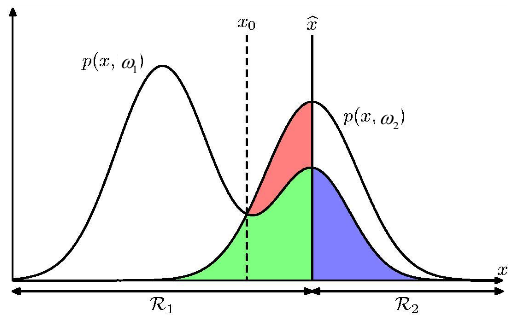Topics in Pattern Recognition and Machine Learning
Winter semester 2021/22
Please note that the course materials will be distributed via Panda. The material you find in Panda will in case of doubt be more up-to-date than the material you can download from this website.
Short Description
The course on Topics in Pattern Recognition and Machine Learning first briefly summarizes the main concepts of statistical pattern recognition and machine learning. Next selected topics will be presented in detail. The choice of topics depends on current research activities and thus may change over time. Examples of such topics to be studied in detail include
- Model estimation in the presence of hidden variables, in order to reveal suspected latent structure buried in the data
- Bias-Variance dilemma and the tradeoff between degree of detail and generalizability of models
- Grafical models
- Sequential data and hidden Markov models
- Specific classification tasks, such as automatic speech recognition
While the first part of the course will follow a regular lecture format, the second part will include active student participation. Students will be asked to read, analyze and present recently published papers from the pattern recognition and machine learning literature. This will often also include the implementation of proposed algorithms.
Contents
- Fundamentals of statistical pattern recognition: Bayes rule, learning of class-conditional densities, linear models for classification and regression
- EM Algorithm and extensions thereof
- Models with discrete or continuous latent variables; GMM, NMF
- Bias-Variance dilemma and model selection
- Graphical models
- Hidden Markov models
- Deep neural networks
- Recent publications in pattern recognition and machine learning
Learning Outcomes & Competences
After completion of the course students will be able to
- choose an appropriate classifier for a given classification problem and be able to learn the parameters of the classifier from training data
- choose an appropriate regression method for function approximation and learn its parameters from training data
- search for latent variables and structure in given data
- make an informative choice for the model order to find a good compromise between degree of detail and generalizabliliy
- comprehend and analyze recent publications from the field of pattern recognition and machine learning
The students
- have gathered an understanding of the importance of the chosen model order on the outcome of classification and regression tasks
- are aware of the impact of a priori assumptions on the result of latent variable and structure discovery in data
- are able to autonomously gain expertise in a certain field of pattern recognition by conducting a literature survey
- can gauge the importance of a given publication for the state of the art in a field
- are able to apply the knowledge and skills learnt in this course to a wide range of disciplines
Implementation
- Lectures predominantly using the blackboard or overhead projector, occasional presentations of (PowerPoint) slides ,
- Exercise classes with exercise sheets and demonstrations on computer
- Instructions how to read and analyze scientific publications in this field
- Autonomous analysis of publications and presentation of results and gained insight
Proposed literature
- R.O. Duda, P.E. Hart, D.G.~ Stork, Pattern Classification, Wiley, 2001
- K. Fukunaga, Introduction to Statistical Pattern Recognition, Academic Press, 1990
- C. M. Bishop, Pattern Recognition and Machine Learning, Springer, 2006
Lecture documents
Lecture slides
- Introduction
- Regression
- Information Theory and Machine Learning
- Discriminative Training
- EM Algorithm and Variational Inference
- Nonnegative Matrix Factorization
- Deep Neural Networks, Part 1
- Deep Neural Networks, Part 2
- Sequential Data
- Ensemble Learning and Decision Trees
- Seminar Topics 2019/2020
- Paper on hierarchical NMF
Templates
Tutorial Documents
Templates and Leaflets
Exercises:



